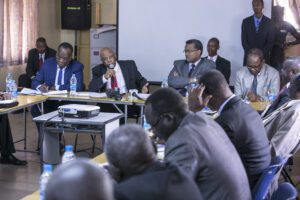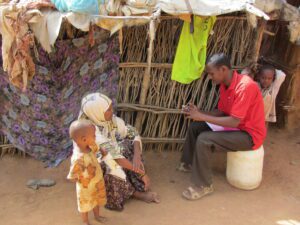Monitoring and Evaluation (M&E) are vital for ensuring that development projects achieve their intended results. Yet, many organizations face significant hurdles when implementing effective M&E. This article explores the M&E challenges in Uganda, drawing on empirical research and sector experience, and offers actionable solutions to strengthen data-driven decision-making.
Why Understanding M&E Challenges in Uganda Matters
Uganda has made important strides in institutionalizing M&E through policies like the National Integrated Monitoring and Evaluation Strategy (2006) and the National Evaluation Plan (2023). However, persistent M&E challenges in Uganda still undermine accountability, transparency, and impact across government, non‑governmental, and private sectors .
By unpacking these obstacles, practitioners can design interventions that not only collect data but also drive tangible improvements in service delivery, policy formation, and community empowerment.
Top 10 M&E Challenges in Uganda
Below are the most frequently cited M&E challenges in Uganda, organized by category, along with practical recommendations for overcoming them.
1. The Missing Middle: Incomplete Data on Outputs and Outcomes
One of the foremost M&E challenges in Uganda is the lack of intermediate data—metrics on outputs, coverage, and immediate outcomes often go untracked. This “missing middle” makes it hard to demonstrate how inputs translate into results and to establish causality between activities and impact .
Solution: Define clear output and outcome indicators at the project design stage. Implement midline surveys and rapid feedback loops to capture real‑time progress, ensuring that data on service reach and client satisfaction feeds back into program adjustments.
2. Poor Feedback Loops and Data Utilization
A second critical issue is the underutilization of collected data. Compliance with reporting requirements often takes precedence over analysis, leaving findings unacted upon. This compliance‑driven culture is a major M&E challenge in Uganda .
Solution: Establish performance‑based incentives for field staff and managers tied to evidence‑based decision‑making. Create dashboards and regular debrief sessions where data insights inform strategic pivots.
3. Parallel Data Collection Systems
Multiple, uncoordinated data systems—from donor surveys to national reporting formats—burden local teams and generate duplicative work. Fragmentation is a pervasive M&E challenge in Uganda .
Solution: Streamline M&E responsibilities by adopting a unified district‑level data collection platform. Encourage donors and government agencies to align on core indicators and reporting schedules.
4. Data Quality Issues: Missing, Inaccurate, and Outdated Data
Data gaps, errors, and lags compromise the reliability of evaluation findings. Ensuring data integrity is among the top M&E challenges in Uganda .
Solution: Introduce automated validation checks and regular Data Quality Assessments (DQAs). Train local teams on standard operating procedures for data entry and verification.
5. Human Capacity Constraints
Many organizations struggle with insufficient M&E expertise and staff turnover. The resultant skills gap is a systemic M&E challenge in Uganda .
Solution: Invest in ongoing, tiered training programs that cater to varying literacy and experience levels. Pair junior staff with experienced mentors and schedule refresher courses whenever new tools or protocols are introduced.
6. Infrastructure Limitations
Unreliable electricity, poor internet connectivity, and costly devices hinder digital data collection—a growing necessity. Infrastructure bottlenecks are a widespread M&E challenge in Uganda .
Solution: Deploy mobile and offline‑first data tools (e.g., KoBoToolbox, CommCare) and equip teams with solar chargers. Advocate for targeted government subsidies to improve rural network coverage.
7. Cultural Resistance to Data Use
A limited data culture—where stakeholders mistrust or undervalue evidence—undermines M&E uptake. Changing mindsets is among the hardest M&E challenges in Uganda .
Solution: Launch change‑management initiatives that highlight successes from data‑driven decisions. Host peer‑learning events where local champions share impact stories.
8. Financial Constraints and Budgeting Gaps
Inadequate funding for M&E activities forces teams to cut corners, reinforcing poor practices. Financial shortfalls rank high among M&E challenges in Uganda .
Solution: Build dedicated M&E line items into project budgets. Present cost‑benefit analyses to donors and government planners, demonstrating how robust M&E drives better returns on investment.
9. Institutional and Policy Fragmentation
Despite policies like NIMES and the National Policy on Public Sector M&E, weak operationalization and multiple reporting mandates create confusion. Policy gaps constitute a major M&E challenge in Uganda .
Solution: Form an inter‑agency coordination body to harmonize frameworks, standardize indicator sets, and monitor policy implementation across ministries.
10. Ethical and Accountability Issues
Ensuring data privacy, informed consent, and community trust is often overlooked. Ethical lapses are an emerging M&E challenge in Uganda .
Solution: Adopt clear data governance protocols, including consent forms in local languages and anonymization practices. Engage community advisory boards to oversee field activities.
Frequently Asked Questions
Q1: What makes these the most pressing M&E challenges in Uganda?
They persist across sectors—health, education, livelihoods—and undermine the credibility of evaluation findings and the ability to learn and adapt in real time.
Q2: How quickly can organizations address these challenges?
While tools and protocols can be deployed within weeks, cultural and institutional shifts take months to years, requiring ongoing leadership commitment.
Q3: Which digital tools help overcome infrastructure constraints?
Offline data platforms like KoBoToolbox and CommCare, solar‑powered charging kits, and low‑bandwidth reporting systems have proven effective.
Q4: How can donors support improved M&E?
By aligning reporting requirements, funding dedicated M&E budgets, and investing in local capacity building rather than creating parallel systems.
Q5: Where can I learn more about best practices in Ugandan M&E?
Visit the Uganda Evaluation Association’s resources at Uganda Evaluation Association for case studies and networking opportunities.
Conclusion
Confronting M&E challenges in Uganda head‑on is essential for translating data into impactful programming. By tackling the missing middle, strengthening feedback loops, harmonizing systems, and investing in people and infrastructure, organizations can build resilient M&E frameworks that foster accountability and sustainable development.
Effective monitoring and evaluation is not a one‑time activity but an ongoing commitment to learning and improvement. Addressing the M&E challenges in Uganda empowers practitioners to unlock true project value and deliver measurable benefits to communities nationwide.






